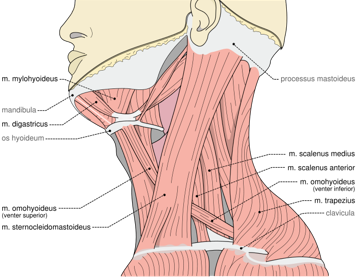Neck pain is chronic if it lasts longer than three months. The pain may be only in your neck, or it may move back, or shoulders. However, common symptoms of chronic neck pain in crick in neck may feel like it’s stabbing or stinging in your neck.
What is “Crick in Neck”?
The term “crick in neck” is used to describe stiffness in the muscles surrounding your lower neck and shoulder blades. However, Common causes of a crick in neck are muscle injury or tension due to sitting or sleeping in an awkward position.
What do we call Nerd Neck?
Nerd Neck is a condition in which your head is set with your ears in a forward-facing position of your body’s vertical midline. This condition may develop if we bend for a long time on the computer screen or while driving. Exercising and physical therapies help in improving posture.
What is Chronic neck pain in crick in neck?
Acute neck pain usually goes away within about one to two weeks. In some people, it comes back in specific situations, such as after work or intensive sports. So, Neck pain is classified as chronic if it persists for at least three months. However, Chronic ongoing pain usually lasts longer than six months.
What are the symptoms of chronic pain in a crick in the neck?
It may be painful to move your neck, and your muscles may feel tight, especially if you’ve been sitting in one position for a long time.
Other symptoms of crick in neck include:
- Less range of motion in your neck or shoulder joints.
- Nausea.
- The trouble with gripping or lifting objects.
- Severe Headaches.
- Muscle weakness or spasms.
- Numbness or tingling.
- Dizziness.
- Clicking and grating noises.
- Shooting pain down your arms or legs.
- Changes in consciousness.
- Intense jaw pain.
If you have neck pain and stiffness that came on quickly and have difficulty lifting both arms over your head, it could be a sign of a condition called polymyalgia rheumatica. This is an inflammatory condition of the muscles, more common in people over the age of Sixty-Five.
How to manage “Symptoms of chronic pain in crick in neck”?
Simple self-help treatments and a day or two’s rest are often enough to clear up a spell of neck pain. However, Other ways to manage symptoms of chronic pain in crick in neck in neck include:
Painkillers:
Painkillers such as paracetamol will often help. It’s best to take them before the pain becomes terrible, but you shouldn’t take them more often than prescribed.
However, Over-the-counter non-steroidal anti-inflammatory drugs, such as ibuprofen, can also help.
Amitriptyline:
If over-the-counter painkillers alone aren’t effective, you may be prescribed an additional medication called amitriptyline.
Gabapentin and pregabalin:
Gabapentin and pregabalin may be given when neck pain becomes chronic. However, if a pinched nerve in your neck is causing discomfort in your arm or arms, these drugs can help reduce nerve irritation.
Relaxation:
Stress can make neck pain worse. One way of reducing the effects of stress is to learn how to relax your neck muscles. Aim for a balance between relaxation and exercise.
Using heat and ice packs:
Applying a heat pack to your neck can help to ease the pain. You can use a hot-water bottle or a reusable heat pad. Also, An ice pack, or even a bag of frozen peas, can be helpful.
You might want to consider applying a heat pack to your neck before and after exercise to help soothe the muscles.
Massage:
Gentle massage of your neck muscles, particularly with aromatic oils, often helps. However, you should discuss using these oils with a doctor as they won’t be suitable for everybody. However, Rubbing the area with ointments and creams can also help reduce pain and produce a feeling of warmth.
What are Chronic Neck Pain in crick in neck Causes?
Chronic neck pain feels like a shock-like pain that goes into the arm and becomes debilitating. Crick in Neck is typically classified as chronic when it persists or regularly recurs for at least three months.
However, some of the common causes include:
- Meningitis.
- Stroke or heart attack.
- Brain or spinal cord injury.
- Poor posture.
- Strains, sprains, and other minor injuries.
- Poor muscle flexibility.
What are the major causes of crick in neck?
Cervical Spondylosis:
It is an umbrella term for spinal degeneration that occurs in the neck. Cervical spondylosis may include:
- Degenerative disc disease. As the intervertebral discs lose hydration over time, they also lose height and become less flexible. This degenerative process could cause the disc to become painful or nearby nerves to become compressed.
- Cervical foraminal stenosis. This condition involves narrowing of the intervertebral foramen, the bony opening where the nerve root exits the spinal canal. When a cervical nerve root becomes compressed, it can cause arm pain or arm numbness.
- Cervical central stenosis. This condition involves narrowing of the spinal canal within the neck. When the spinal cord becomes compressed within the neck, it can cause pain or numbness.
Muscle spasm:
Muscle spasms are involuntary muscle contractions. They often stem from injury to or overuse of the muscle. Muscles in the neck and upper back can be prone to spasm because of their stress. Your neck must support your head, which weighs about as much as a bowling ball.
Meningitis:
It is an inflammation of the protective membranes covering the brain and spinal cord. However, Symptoms often come on suddenly and include a sudden high fever or blackouts.
Brain or Spinal Cord injury:
A fall or blow to the head or back can injure the brain, the spinal cord, or both. These injuries are medical emergencies that can cause permanent brain damage or paralysis.
Heart Attack:
Heart attacks and strokes sometimes cause sudden neck stiffness and can be life-threatening if not treated as soon as possible. A person should seek emergency medical attention if neck stiffness occurs with:
- Difficulty breathing
- Chest pain
- Shooting sensations down one arm
- Numbness in the limbs
How can we treat chronic pain in crick in neck?
Crick in the neck is an imprecise term that describes several cervical problems and injuries in the structures around the neck, such as a strain in the upper back muscles.
Treatments for a crick in the neck include:
Radiofrequency denervation:
Radiofrequency denervation may help with long-term neck pain that originates. In this procedure, radio waves produce electrical currents that heat the tip of a needle.
Traction:
Traction is used to relieve pressure from nerves. The heads gently pulled up and away from our neck. This stretches muscles and ligaments and makes more room for the spine.
Manipulation:
Manipulation is a type of manual therapy used to adjust crick in the neck. It can be uncomfortable at the time, so it’s essential to understand what’s involved.
Injections:
When you have constant pain in the back of your head or arm, a long-acting local anesthetic or steroid injection can help.
These injections are given in an x-ray department so that the specialist can position the needle precisely.
What conditions require neck surgery in crick in neck?
When it comes to neck pain, surgery is usually a last resort. But, if your condition is painful or causing problems in your arms and legs. Surgery may be necessary. However, the surgical goal is to reduce pain and restore spinal stability.
But If chronic neck pain is left untreated, it can cause decreased mobility, impaired immunity, decreased concentration, anorexia, and sleep disturbances.
 Posting Point
Posting Point

